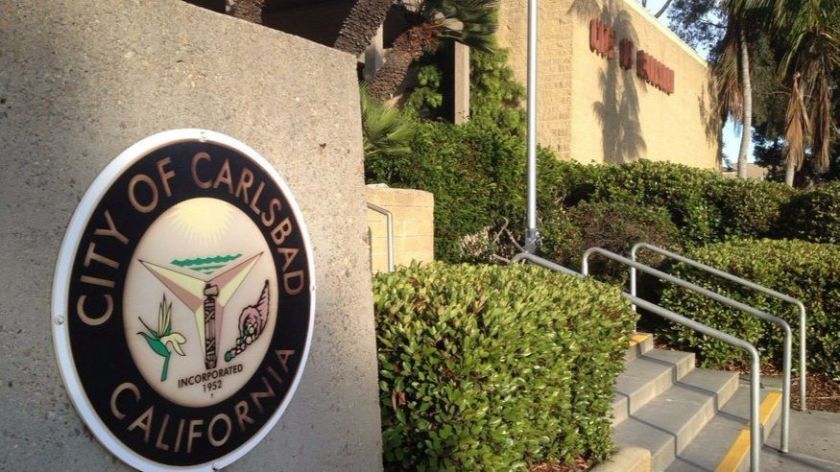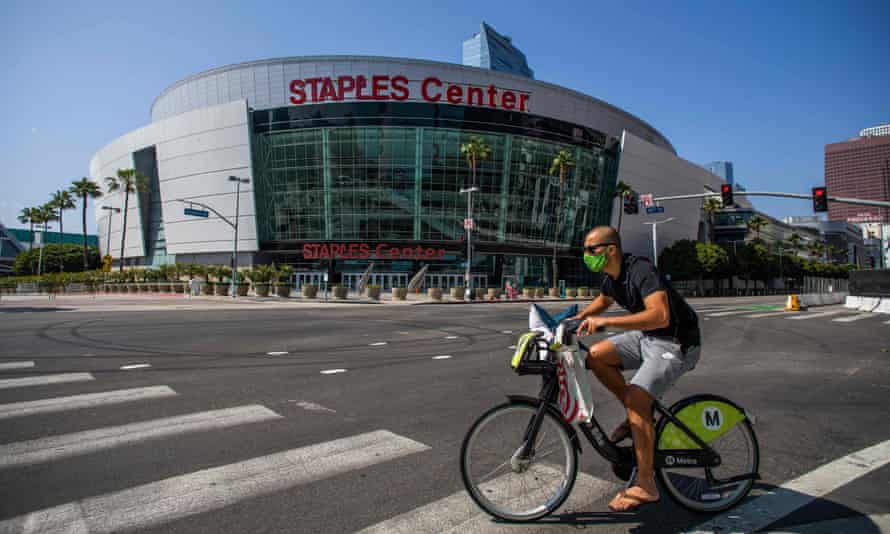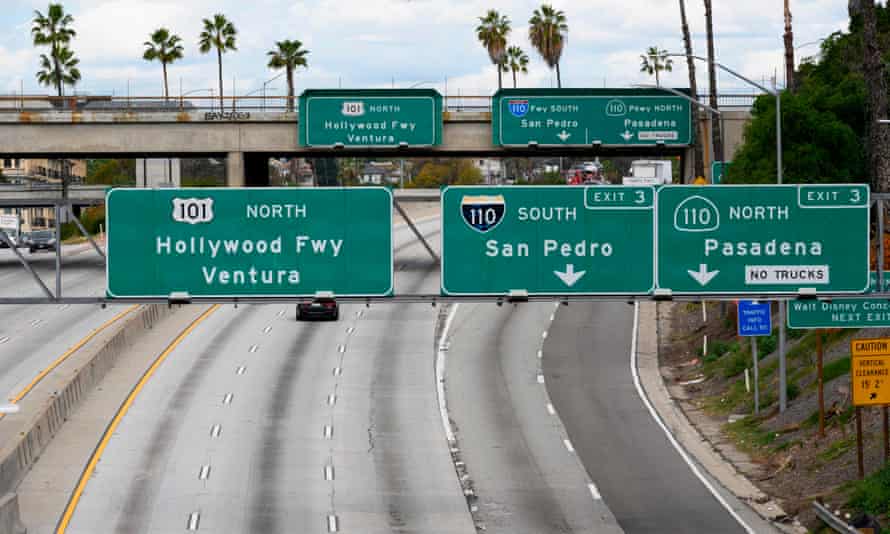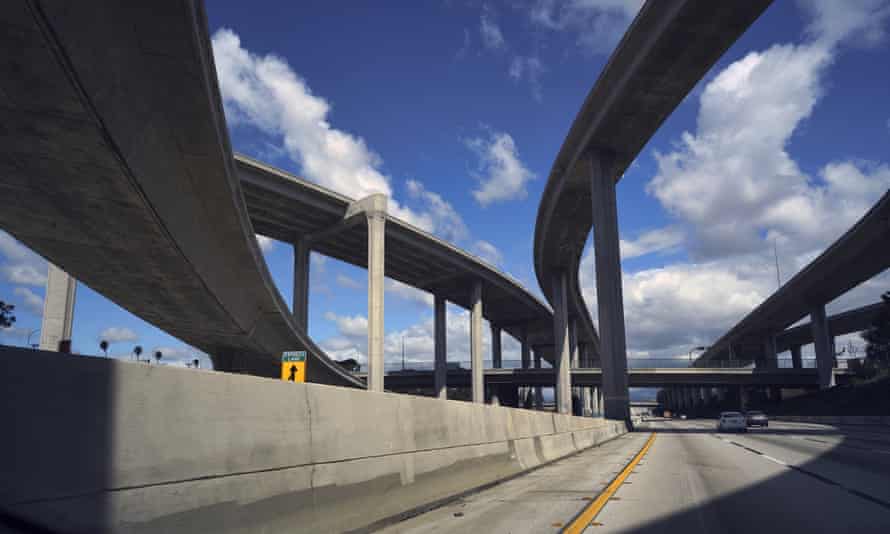Digging the geometry but the gears are such absolute shyt that I can't recommend the bike. I had typed a lot of not-so-nice stuff about State Bicycles but imma refrain for the time being. Instead I finally got around to sending them an email to see how things play out. For now, the nicest advice I can give to those in the market for an entry-level bike is to redirect your money to BikesDirect for a quality inexpensive option. I will have more to say about State depending on how they respond to my email.My bad, I never even saw these posts. Don't know anything about the retrospec, but state is considered a better brand.
How are you liking yours @Macallik86 ? What do you think of the geometry of the 4130 so far? Too aggressive? Just right?
You are using an out of date browser. It may not display this or other websites correctly.
You should upgrade or use an alternative browser.
You should upgrade or use an alternative browser.
Official Coli Bike/Cycling thread
More options
Who Replied?Digging the geometry but the gears are such absolute shyt that I can't recommend the bike. I had typed a lot of not-so-nice stuff about State Bicycles but imma refrain for the time being. Instead I finally got around to sending them an email to see how things play out. For now, the nicest advice I can give to those in the market for an entry-level bike is to redirect your money to BikesDirect for a quality inexpensive option. I will have more to say about State depending on how they respond to my email.
Damn, that sucks. What do you think of the frame itself, outside of its components? Just the gear group or other stuff too? Is it past the window of return?
I think it's a good bike outside of the gear group set.Damn, that sucks. What do you think of the frame itself, outside of its components? Just the gear group or other stuff too? Is it past the window of return?
It took a few seat adjustments, brake pad adjustments, etc over a few rides. I think everything else is how I want it, but it's hard to really focus on the smaller things when most gear shifts are jumpy or do nothing. My BikesDirect hybrid spoiled me so I'm used to shifting gears at even minor inclines to be more efficient, and now, I catch myself struggling up larger hills because I don't trust my bike to shift gears properly.
I'm going to reach out to a pricier, more thorough bike mechanic that I had a positive interaction with before to see if I can get a second opinion and a more detailed breakdown of my options so that I know what to look for in terms of an inexpensive (or at this point, potentially expensive) gear replacement option.
Last edited:
I think it's a good bike outside of the gear group set.
It took a few seat adjustments, brake pad adjustments, etc over a few rides. I think everything else is how I want it, but it's hard to really focus on the smaller things when most gear shifts are jumpy or do nothing. My BikesDirect hybrid spoiled me so I'm used to shifting gears at even minor inclines to be more efficient, and now, I catch myself struggling up larger hills because I don't trust my bike to shift gears properly.
I'm going to reach out to a pricier, more thorough bike mechanic that I had a positive interaction with before to see if I can get a second opinion and a more detailed breakdown of my options so that I know what to look for in terms of an inexpensive (or at this point, potentially expensive) gear replacement option.
That sucks. Sorry to hear that. Hopefully it's just something stupid like a janky cable or derailleur that's out of alignment. Perhaps, ask him if it is an actual issue with the overall quality of components that piecemealing together a nicer groupset slowly would be better than replacing the whole thing all all once with a lower valued one.
Carlsbad cracking down on electric bikes as number of collisions nearly doubles
Carlsbad cracking down on electric bikes as number of collisions nearly doubles

Carlsbad sets rules for electric bicycles, scooters and similar devices.
(Union-Tribune)
Violators could be fined up to $100 under new ordinance
BY PHIL DIEHL
MARCH 27, 2022 6 AM PT
Carlsbad has written a new ordinance to reduce the rapid increase of accidents involving electric bicycles, scooters and other motorized mobility devices.
Police officers documented 39 collisions involving bicycles or e-bikes in 2020, then 63 collisions in 2021. With 19 so far this year, the number is on track to set a new record, Sgt. Scott Merritt told the Carlsbad City Council last week.
Injuries occurred in 163 of the 186 bicycle or e-bike collisions reported to police between January 2019 and December 2021. Also, the operator of the bicycle or e-bike was at fault in 72 of 99 collisions reported from January 2020 through July 2021, according to the Police Department.
“It’s caused us great concern,” Merritt told the City Council. Also, an increasing number of children ride electric bicycles to school, and police have received numerous complaints about dangerous behavior close to campuses and in nearby neighborhoods.
Under the new rules, e-bikes and other motorized mobility devices will be prohibited on public sidewalks, drainage ditches, culverts, channels, athletic courts or gyms.
Also, riders must take care and reduce speed when necessary. They can’t carry passengers on the handlebars or rear bike racks that are not specifically made for additional riders. And on trails less than 5 feet wide, the rider must get off and walk the bike within 50 feet of a pedestrian.
Unsafe operators could be fined up to $100 under the new ordinance, but first-time violators will be encouraged to complete a Police Department safety course in lieu of paying the fine.
“The ultimate goal is to enforce the law while educating e-bicycle and other mobility device operators on safety and the rules of the road,” states a city staff report.
Without a local ordinance, e-bike violators can only be cited under the California Vehicle Code, which has limited applications for electric bicycles and other personal mobility devices.
The local ordinance will regulate “a broad range of careless or reckless conduct,” said Deputy City Attorney Marissa Kawecki.
It will give police more control and applies to a broad range of conduct when using small, electricity-powered vehicles including Segway scooters and motorized boards, she said.
Mobility devices used by people with disabilities are not covered by the ordinance.
The city’s Traffic and Mobility Commission voted unanimously March 7 to recommend approval of the ordinance.
The City Council voted unanimously Tuesday to introduce the ordinance and is expected to adopt it April 5. If so, it would take effect May 5.
San Marcos adopted a similar ordinance earlier this month. Most cities in San Diego County continue to follow the state guidelines for e-bikes.
Carlsbad cracking down on electric bikes as number of collisions nearly doubles

Carlsbad sets rules for electric bicycles, scooters and similar devices.
(Union-Tribune)
Violators could be fined up to $100 under new ordinance
BY PHIL DIEHL
MARCH 27, 2022 6 AM PT
Carlsbad has written a new ordinance to reduce the rapid increase of accidents involving electric bicycles, scooters and other motorized mobility devices.
Police officers documented 39 collisions involving bicycles or e-bikes in 2020, then 63 collisions in 2021. With 19 so far this year, the number is on track to set a new record, Sgt. Scott Merritt told the Carlsbad City Council last week.
Injuries occurred in 163 of the 186 bicycle or e-bike collisions reported to police between January 2019 and December 2021. Also, the operator of the bicycle or e-bike was at fault in 72 of 99 collisions reported from January 2020 through July 2021, according to the Police Department.
“It’s caused us great concern,” Merritt told the City Council. Also, an increasing number of children ride electric bicycles to school, and police have received numerous complaints about dangerous behavior close to campuses and in nearby neighborhoods.
Under the new rules, e-bikes and other motorized mobility devices will be prohibited on public sidewalks, drainage ditches, culverts, channels, athletic courts or gyms.
Also, riders must take care and reduce speed when necessary. They can’t carry passengers on the handlebars or rear bike racks that are not specifically made for additional riders. And on trails less than 5 feet wide, the rider must get off and walk the bike within 50 feet of a pedestrian.
Unsafe operators could be fined up to $100 under the new ordinance, but first-time violators will be encouraged to complete a Police Department safety course in lieu of paying the fine.
“The ultimate goal is to enforce the law while educating e-bicycle and other mobility device operators on safety and the rules of the road,” states a city staff report.
Without a local ordinance, e-bike violators can only be cited under the California Vehicle Code, which has limited applications for electric bicycles and other personal mobility devices.
The local ordinance will regulate “a broad range of careless or reckless conduct,” said Deputy City Attorney Marissa Kawecki.
It will give police more control and applies to a broad range of conduct when using small, electricity-powered vehicles including Segway scooters and motorized boards, she said.
Mobility devices used by people with disabilities are not covered by the ordinance.
The city’s Traffic and Mobility Commission voted unanimously March 7 to recommend approval of the ordinance.
The City Council voted unanimously Tuesday to introduce the ordinance and is expected to adopt it April 5. If so, it would take effect May 5.
San Marcos adopted a similar ordinance earlier this month. Most cities in San Diego County continue to follow the state guidelines for e-bikes.
Just got a Specialized Turbo Vado SL
I don’t think I can go back


I don’t think I can go back


Breaking my Trek out for the 1st time tomorrow, supposed to be damn near 80 degrees.
Picked up one of these vertical storage racks awhile ago from Amazon, complete space saver.

Picked up one of these vertical storage racks awhile ago from Amazon, complete space saver.

Took it to the mechanic. Dude put on a clinic of troubleshooting and testing theories on what was broken. Very skilled at what he does. I think he mentioned he had been fixing bikes for 23 years, starting @ 12 years old. He noticed the chain was slack which could be contributing to the jumpy gears so he removed a few links. When that didn't work he switched to a new chain. When that didn't work he replaced the derailleur cable, etc. Towards the end he was running out of ideas but had one final theory about the indexed gears being misaligned. He replaced my shifter with one from the 1970s he had lying around in the shop and said that could be a short-term solution. Refused to charge me for the consultation and refused a tipThat sucks. Sorry to hear that. Hopefully it's just something stupid like a janky cable or derailleur that's out of alignment. Perhaps, ask him if it is an actual issue with the overall quality of components that piecemealing together a nicer groupset slowly would be better than replacing the whole thing all all once with a lower valued one.

Went for a 20 mile ride to test it out. So unfortunately the issue isn't 100% gone, but it has been reduced by like 90% so I'm happy. I kinda like the added control of friction shifters anyways. In retrospect, it makes sense that I would enjoy the extra control to contrast the lack of control I had with the jumpy gears.
Took it to the mechanic. Dude put on a clinic of troubleshooting and testing theories on what was broken. Very skilled at what he does. I think he mentioned he had been fixing bikes for 23 years, starting @ 12 years old. He noticed the chain was slack which could be contributing to the jumpy gears so he removed a few links. When that didn't work he switched to a new chain. When that didn't work he replaced the derailleur cable, etc. Towards the end he was running out of ideas but had one final theory about the indexed gears being misaligned. He replaced my shifter with one from the 1970s he had lying around in the shop and said that could be a short-term solution. Refused to charge me for the consultation and refused a tip
Went for a 20 mile ride to test it out. So unfortunately the issue isn't 100% gone, but it has been reduced by like 90% so I'm happy. I kinda like the added control of friction shifters anyways. In retrospect, it makes sense that I would enjoy the extra control to contrast the lack of control I had with the jumpy gears.
That’s good to hear. Still wouldn’t hurt to update the gearing system down the line. At least it’ll be serviceable in the short term though. If you’re happy with the frame, and can add a quality groupset for ~$500, you’ll still have a really nice ride that’ll last you for years to come for ~$1k.
Tanahashi Coates
Superstar
Any recommendations for a auto bike rack?
At least 36 cyclists were killed in Los Angeles county in 2019. Photograph: Alamy
Poor infrastructure makes LA one of the most difficult US cities to bike in. Cyclists hope the pandemic will change that
With year-round perfect riding weather and a topography that allows both bike commuters to enjoy pedaling without too much strain and experienced riders to explore the nearby mountains and hills, Los Angeles in many ways is a cyclists’ paradise.
But the city’s cycling reputation is tempered by the fact that it is one of the most vexing, difficult and downright dangerous cities in the United States to ride a bike in.

Cycling 'explosion': coronavirus fuels surge in US bike ridership
Read more
“The weather here is so perfect that you really don’t need a car to shelter like you do in other parts of the country,” said Phil Gaimon, a former professional cyclist turned author and YouTube star. “But LA is also the shyttiest city in the most beautiful part of the world.”
At least 36 cyclists were killed in Los Angeles county in 2019, according to statistics compiled by the National Highway Traffic Safety Administration (NHTSA), accounting for about a third of all cycling deaths in California that year. Just last month Branden Finely, 46, was killed while riding his bike through downtown, struck by the driver of a stolen pick-up truck weaving in and out of traffic.

The Covid-19 pandemic has added impetus for the region to improve in its cycling infrastructure. Photograph: Apu Gomes/AFP via Getty Images
In 2018, Bicycling Magazine gave LA the ignominious title of “worst bike city in America” because of the hazards posed to cyclists by distracted drivers, the terrible shape of most streets, and the seeming willingness of local officials to pay out millions of dollars in lawsuits rather than address the infrastructure needs that could make LA a safer place to bike.
“In terms of infrastructure for cyclists, let’s just say that my organization isn’t going to be out of business anytime soon,” Eli Kaufman, the executive director of the Los Angeles county Bicycle Coalition (LACBC), said. “It just hasn’t been a priority given all of the other intractable issues that the city and county have to deal with.”
But the Covid-19 pandemic has added impetus for the region to improve its cycling infrastructure, as bike sales boom and more people hit the streets to escape being stuck at home and to get some exercise with gyms mostly shuttered. “We have to build a culture that will demand the changes the city needs and with more people getting on bikes now that is becoming a reality,” Kaufman said.
Arguably more than any other city in the US, Los Angeles is a product of the automobile, its freeways and multilane boulevards – the 101, the 405, Sunset Blvd, Hollywood Blvd – embedded in the American psyche.
That strongly rooted car culture, paired with limited public transportation options, has only strengthened most Angelenos’ reliance on cars, and made advocating for alternative transportation modes an uphill battle.
“Doing away with the car culture here in Los Angeles is a lot like trying to do away with the electoral college, it’s not going to happen,” said Stefan Mayer, a cyclist in Los Angeles since 1980 and a coach at the Encino Velodrome in the San Fernando Valley.

The poor shape of LA streets has forced the city to dole out millions of dollars in the last decade to injured cyclists. Photograph: Robyn Beck/AFP via Getty Images
That attitude has been reflected in the courts as well. Take the case of prominent entertainment attorney Milton Olin, who was killed in 2013 when a Los Angeles county sheriff’s deputy struck him with his car on Mulholland Drive. Despite the revelation that deputy Andrew Wood had been texting his wife at the time of the accident, the district attorney’s office declined to pursue criminal charges against him. Olin’s family was eventually awarded $11.75m in a civil settlement with the county.
“The district attorney just refused to prosecute the cop [who] killed Milt,” said Mayer, who knew Olin both professionally and personally for over 30 years.
Cars aren’t the only things killing cyclists. Sometimes it’s the roads themselves.
Despite numerous cities in Los Angeles county raising their sales taxes twice in the last 15 years in order to improve road conditions, and voters passing a gas tax in 2017 to do the same statewide, LA, and California as a whole, have some of the worst public streets in the nation.
Over 46% of urban roads in California are rated as being in poor condition, according to the Federal Highway Administration. That number jumps to over 62% when accounting for only the roads in the Los Angeles, Long Beach and Anaheim metropolitan areas, data compiled by the automotive website Copilot found.
The poor shape of streets in Los Angeles has forced the city to dole out millions of dollars in the last decade to cyclists severely injured by the shoddy road conditions.

Los Angeles has some of the worst public streets in the nation. Photograph: Richard Vogel/AP
In 2017, the city paid $7.5m to a man left quadriplegic after he crashed on a stretch of road where the pavement had buckled because of tree roots. That same year it gave $6.5m to a cyclist who suffered a traumatic brain injury after hitting a massive pothole on his bike, and another $4.5m to the family of a rider killed after he hit a 2in ridge in the pavement.
“Right now, the bike infrastructure in Los Angeles is woefully inadequate,” Kaufman said. “We’re not doing a systemwide approach, so you end up with these bike lanes that just end. They’re bike lanes to nowhere.”
City officials in Los Angeles agree there is plenty of room for improvement when it comes to making the city more bike-friendly, and acknowledge that the cycling horror stories occur too frequently. Local officials appear to be at least willing to give lip service to cyclists’ concerns and have argued that riding a bike in LA has vastly improved in recent years.
In 2015, the Los Angeles mayor, Eric Garcetti, announced the Vision Zero plan, which aimed (but failed) to reduce cycling fatalities by 20% by the end of 2017 and see zero deaths on city roads by 2025. The city’s 2035 Mobility Plan hopes to add to an existing bike infrastructure plan and link up a network of fully separated and protected bicycle lanes and paths.
Last year, the city added or made safety upgrades to more than 61 miles of bike lanes – more than doubling the improvements it made in 2019, according to LADOT. And as part of LA’s Green New Deal, the city plans to increase the percentage of all trips made by walking, cycling, micro-mobility, matched rides, or public transit to at least 35% by 2025 and to 50% by 2035.
....
reached character limit
read the full article on the site